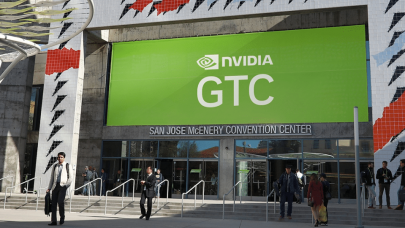
Q&A with Nvidia’s Chief of DGX Systems on the DGX-GB200 Rack-scale System
March 27, 2024
Pictures of Nvidia's new flagship mega-server, the DGX GB200, on the GTC show floor got favorable reactions on social media for the sheer amount of computing po Read more…

Nvidia’s New Blackwell GPU Can Train AI Models with Trillions of Parameters
March 18, 2024
Nvidia's latest and fastest GPU, codenamed Blackwell, is here and will underpin the company's AI plans this year. The chip offers performance improvements from Read more…

Sweden Plans Expansion for Nvidia-Powered Berzelius Supercomputer
January 26, 2023
The Atos-built, Nvidia SuperPod-based Berzelius supercomputer – housed in and operated by Sweden’s Linköping-based National Supercomputer Centre (NSC) – Read more…

Oregon State University to Launch Nvidia-Powered Supercomputer Center
October 17, 2022
Oregon State University (OSU) is planning to launch an expansive, expensive – $200 million – new research and education center. The center will be named aft Read more…

Nvidia Announces ‘Eos’ Supercomputer
March 22, 2022
At GTC22 today, Nvidia unveiled its new H100 GPU, the first of its new ‘Hopper’ architecture, along with a slew of accompanying configurations, systems and Read more…

Nvidia Expands Its Certified Server Models, Unveils DGX SuperPod Subscriptions
June 2, 2021
Nvidia is busy this week at the virtual Computex 2021 Taipei technology show, announcing an expansion of its nascent Nvidia-certified server program, a range of Read more…

Nvidia’s Newly DPU-Enabled SuperPod Is a Multi-Tenant, Cloud-Native Supercomputer
April 12, 2021
At GTC 2021, Nvidia has announced an upgraded iteration of its DGX SuperPods, calling the new offering “the first cloud-native, multi-tenant supercomputer.” Read more…

- Click Here for More Headlines

Whitepaper
How Direct Liquid Cooling Improves Data Center Energy Efficiency
Data centers are experiencing increasing power consumption, space constraints and cooling demands due to the unprecedented computing power required by today’s chips and servers. HVAC cooling systems consume approximately 40% of a data center’s electricity. These systems traditionally use air conditioning, air handling and fans to cool the data center facility and IT equipment, ultimately resulting in high energy consumption and high carbon emissions. Data centers are moving to direct liquid cooled (DLC) systems to improve cooling efficiency thus lowering their PUE, operating expenses (OPEX) and carbon footprint.
This paper describes how CoolIT Systems (CoolIT) meets the need for improved energy efficiency in data centers and includes case studies that show how CoolIT’s DLC solutions improve energy efficiency, increase rack density, lower OPEX, and enable sustainability programs. CoolIT is the global market and innovation leader in scalable DLC solutions for the world’s most demanding computing environments. CoolIT’s end-to-end solutions meet the rising demand in cooling and the rising demand for energy efficiency.
Download Now
Sponsored by CoolIT
Whitepaper
Transforming Industrial and Automotive Manufacturing
Divergent Technologies developed a digital production system that can revolutionize automotive and industrial scale manufacturing. Divergent uses new manufacturing solutions and their Divergent Adaptive Production System (DAPS™) software to make vehicle manufacturing more efficient, less costly and decrease manufacturing waste by replacing existing design and production processes.
Divergent initially used on-premises workstations to run HPC simulations but faced challenges because their workstations could not achieve fast enough simulation times. Divergent also needed to free staff from managing the HPC system, CAE integration and IT update tasks.
Download Now
Sponsored by TotalCAE
Advanced Scale Career Development & Workforce Enhancement Center
Featured Advanced Scale Jobs:
HPCwire Resource Library
HPCwire Product Showcase
© 2024 HPCwire. All Rights Reserved. A Tabor Communications Publication
HPCwire is a registered trademark of Tabor Communications, Inc. Use of this site is governed by our Terms of Use and Privacy Policy.
Reproduction in whole or in part in any form or medium without express written permission of Tabor Communications, Inc. is prohibited.
























